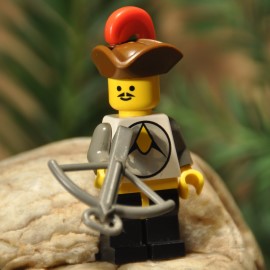Scholarly citations with citemarks
Citing

In scholarly works important concepts, when not original, need to be attributed, but getting citations right is an error-prone task.
BLUEPHRASE has special citemark notation to solve this problem. Each attribution consists of a short reference citation that appears in the body-matter, and a full citation that appears in the back-matter together with other citations. Both of these can be kept together, at the point in your manuscript where the attribution is needed, using phrasing surrounded by curly-brace doppelmarks that look like this {{ ... }}.
Inside the doppelmarks, are two delimited expressions:
- an interscribed expression delimited with single-quotes ' ... ', and
- an adjunct expression delimited with double-quotes " ... ".
Here's an example of citemarks:
Later he asks a biologist to calculate what percentage of a McDonald's meal was derived
from corn. {{'(Pollan 2006, 99–100)' "Pollan, Michael. 2006. <<i The Omnivore’s Dilemma:
A Natural History of Four Meals.>> New York: Penguin."}}
When this BLUEPHRASE is compiled, the emitted HTML contains the interscribed expression, with a hyperlink to the full citation, which appears elsewhere. Here's how the example would be emitted:
<p>Later he asks a biologist to calculate what percentage of a McDonald's meal was derived
from corn. <a id=ct20 href='#ct23'>(Pollan 2006, 99–100)</a></p>
Building the list of references
The adjunct expressions from all of the citemarks in your manuscript are gathered together and emitted where a build pragma occurs. Citations can be ordered alphabetically, or in the order that they occur within the body-matter. Here's what it might look like:
div {
h1 References Cited
!build-citations *order=alpha
}
Then, the relevant portion of the emitted output (ignoring all other citemarks, for brevity) would look like this:
<div>
<h1>References Cited</h1>
<ul>
...
<li id=ct23><a href='#ct20'>(Pollan 2006, 99–100)</a><cite>Pollan, Michael. 2006. <i>The Omnivore’s Dilemma: A Natural History of Four Meals.</i> New York: Penguin.</cite></li>
...
</ul>
</div>
Each full citation is hyperlinked back to the place in the body matter where the attribution was first made.









